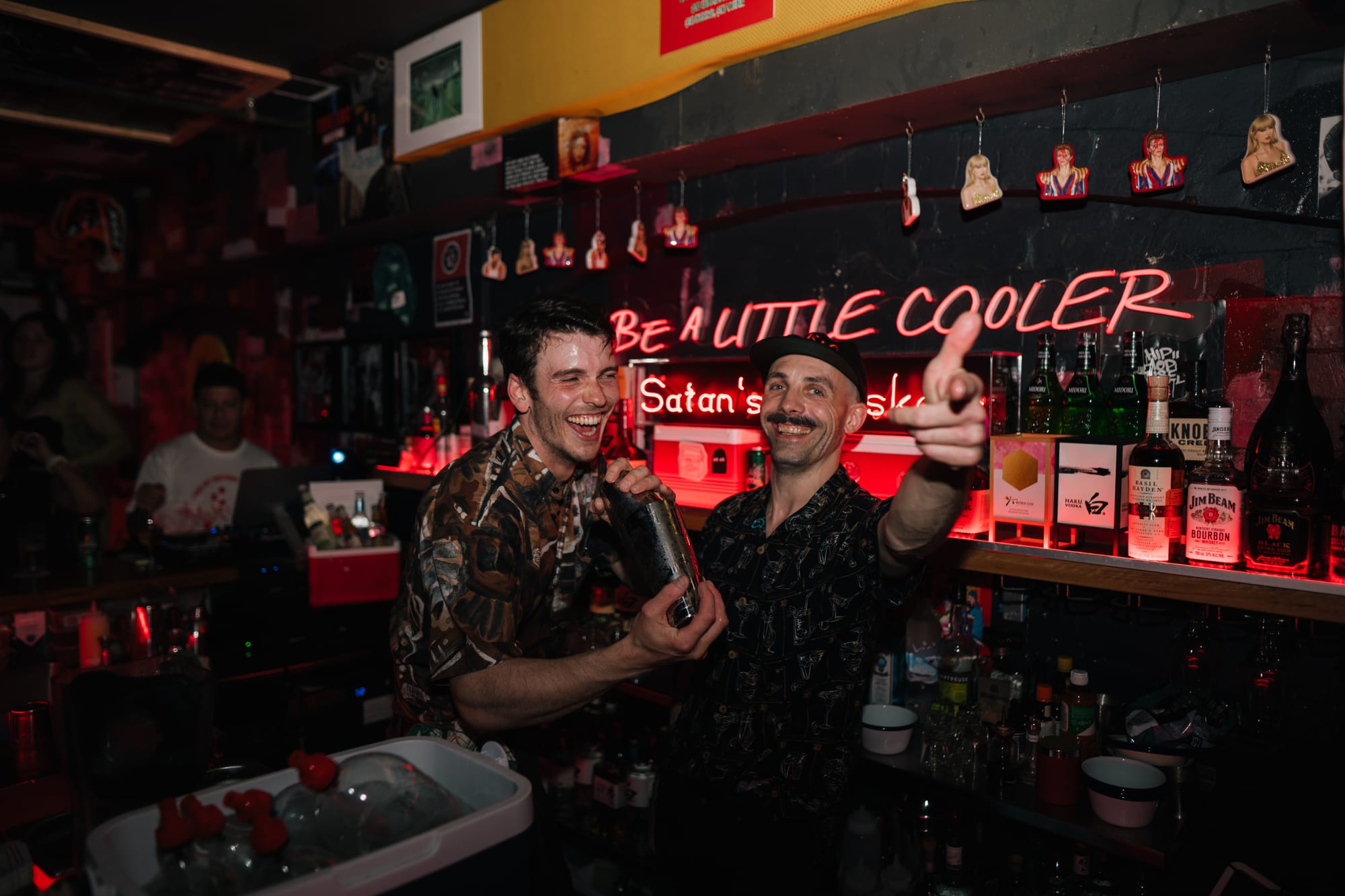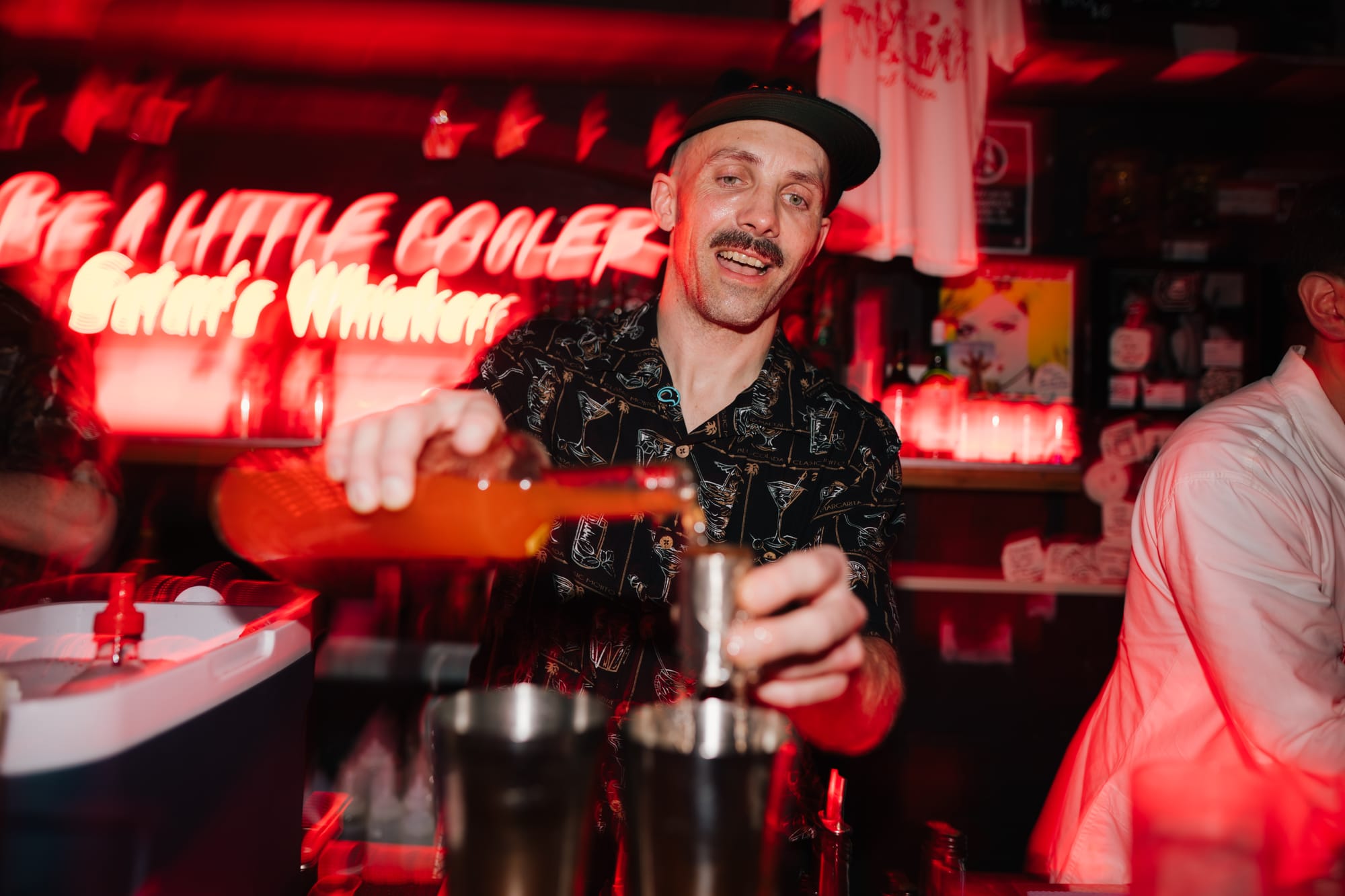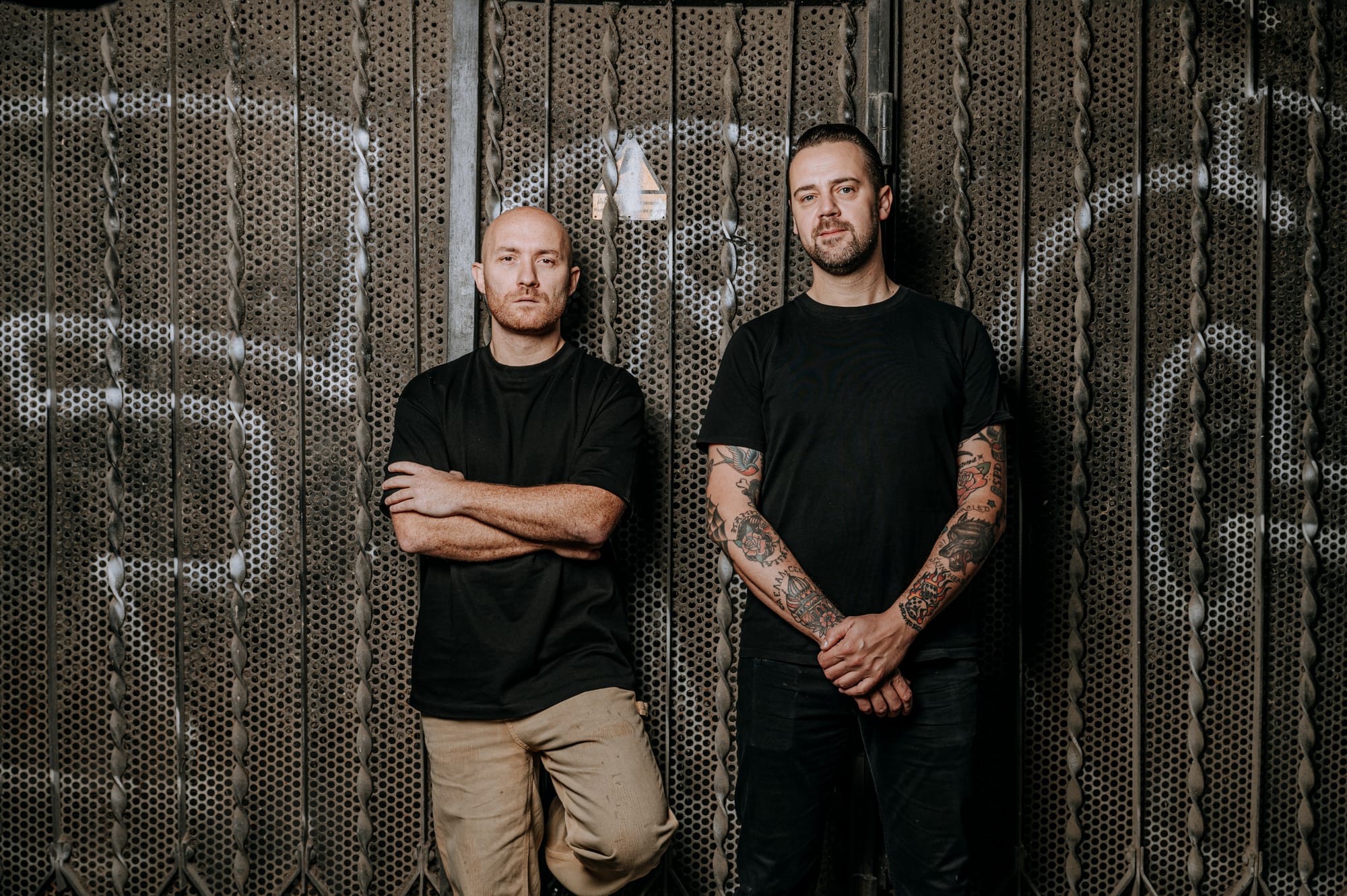Satan’s Whiskers on traditional bartending skills and classics, with Daniel Waddy and Finn Sugrue
What have we lost in pursuit of new and novel drinks?

Before we get into it, nominations in the third annual Boothby Best Bars QLD awards close tonight — click here to nominate your bar and yourself before midnight tonight. The awards will take place on Monday 16 June during Bartenders’ Weekender — you can check the current timetable here, with more events being added soon.
Well, it has been quite a couple weeks. The Maybe Cocktail Festival brought some stellar international bartenders to town last week, with something like four guests shifts on each night, two days of talks, and it was the biggest and best year for the event yet. Incredible stuff — it takes a lot of organising, so kudos to Stefano, Paolo, Sarah, Hunter and the entire Maybe Group team.
Below, we’ve got this week’s Drinks At Work with Satan’s Whiskers — your favourite bartender’s favourite bartenders’ bar. I spoke to Daniel Waddy and Finn Sugrue about what we’ve lost in the advancement of bartending technique, got some more confirmation that the days of peak Milk Punch are numbered, and loads more.
And then we’re trying something new, too. I’ve made a habit of not re-writing press releases over the last four and a half years of Boothby, and that’s not going to change. But I think a little quick hit with the info you need to know can’t be a bad thing. (Let me know if you appreciate these updates, or you don’t care for them, by emailing me at sam@boothby.com.au.)

“Making Milk Punch is about exciting as watching paint dry,” says Daniel Waddy.
Yes, folks, it’s another week and another Milk Punch diss, this time courtesy of Daniel Waddy. He’s the guy running Satan’s Whiskers in London, and I spoke to him and Finn Sugrue ahead of their takeover at the Maybe Cocktail Festival last week.
Satan’s Whiskers is the favourite bar of just about every bartender you know who has been to London — it’s a neighbourhood bar that does classic cocktails, but it’s their pursuit of excellence, their emphasis on training, and attention to detail that results in some pretty impressive hospitality.
Daniel and Finn were in Sydney for a takeover last Saturday at Little Cooler during the Maybe Cocktail Festival that was presented by Club Suntory, and they’ve been doing some masterclasses in Australia talking about the Suntory Cup and it’s Reinvigorate the Retro theme — a topic they get into a little bit this episode as well.
(As an aside — the Suntory Cup is open for entries now and closes May 19th, and you can learn more about that and enter here at club.suntory.com.)
We also get into the tension between classic drinks and those that are more experimental and progressive, and what perhaps bartending is lacking with its modern vogue for advanced techniques, batching, and the shock of the new. And we talk about how all of that has implications for the craft of bartending.
It’s a good chat with passionate people — so passionate in fact that we were straight into the chat before I even got to introduce them. Below, I’ve got a few takeaways from the conversation, but do give the full episode a listen.
The Quotable Satan’s Whiskers
“A core belief of ours is that the best drinks are often the simple ones. I think Satan’s Whiskers is more out of step with current trends than when it opened.”
When Satan’s Whiskers opened, there were more bars that showcased classic cocktails — and on their list. Today, Daniel says, that’s getting harder and harder to find.
It seems to be we’re still on the swing away from simple and at the more complicated, progressive, experimental end of the spectrum. Lots of technique, lots of signature drinks, many ingredients. I don’t necessarily think that’s a bad thing — the best places do this with a respect and appreciation for the ingredients they use, after all. The Waratah, for example, uses plenty of technique, but it’s all in service of the produce and the spirits they use, and the drinks are delicious.
But as Daniel points out in the chat, there’s complicated, and then there’s overcomplicated. And he asks the question: who are these drinks really serving? Is it serving the customer to give them a clarified Pina Colada, or is it better to give them the real, often more delicious thing? Is all this complication about the bartender’s ego?
“If you serve someone a drink,” Daniel says, “and they say ‘that’s really interesting,’ I can almost guarantee you that what is going through their head is not ‘that’s delicious.’”
“Consumers haven’t forgotten about simple drinks.”
Daniel points out that the top 20 drinks searched for on Diffordsguide.com are, generally speaking, the simplest drinks. Pornstar Martinis, Cosmopolitans and the like. That’s what the broader populace is looking for.
But I guess the corollary to this is that if those recipes are what the broader public is looking for, then perhaps bartenders ought to be doing something a little more complicated for their guests when they arrive in their bar? If they’re making Cosmos at home, maybe you should be elevating that experience — and charging them $25 for it too — when they’re out, giving them something they can’t do themselves.
The question, as always though, has to be: is it actually delicious? Is it actually a better riff or version than the original? Is it really worth $25?
“The primary purpose of the menu has to be to help your guests try to choose something they will like.”
This is just a plea: make your menu understandable. It doesn’t mean you can’t use ingredients that people are unfamiliar with — but I agree with Daniel that your menu should be a simple, easily navigable way to finding a delicious drink. The menu should lower barriers for the guest, not raise them. Some people will ask questions about what a certain ingredient is that they don’t recognise, but I’d wager most would not — they’ll just get something else, or order a classic they know they like.
If you are going down the route of unfamiliar ingredients, it would be a shame to lose a guest on the way to the drink simply because they couldn’t understand the menu.

The Press Release Dump
Yeah, we get them too — here’s a quick summary of the press releases that have crossed our desk worth knowing about.
Mucho Group is launching Herbs Taverne, with the bar set to open on Saturday 3 May. It’s a new Negroni bar at 213 Clarence St — round the corner from Cantina OK! — focused on aperitifs and digestifs. They’ll have a menu of 12 drinks, including Negroni variations, aperitifs, house-blended digestifs, and original cocktails, with each drink “built to be purely delicious but also surprising,” says Jeremy Blackmore, Mucho Group creative director.
Lorenzo Antinori (Bar Leone) and Simone Caporale (Sips, Boadas) are opening a bar together in Hong Kong. The Cuban-inspired bar will be called Montana, and is set to open in Hong Kong’s summer (our winter), in time for all those who will descend on Hong Kong during The World’s 50 Best Bars celebration in October.
The North America’s 50 Best Bars 51-100 list has been released. From the Australian perspective, expat Australian bartender Iain Griffiths new venture, Bar Snack, landed at 85 on the list despite opening just a few months ago — big congratulations to him. Expat Australian Sam Ross and Michael McIlroy’s Attaboy, one of our favourite bars anywhere, was at number 66. And big congratulations to Greg Buda, who we met this week during Maybe Cocktail Festival, and who gave one of the best masterclasses I’ve had the chance to see — his Montreal bar, Bisou Bisou, lands at number 75. See the full 51-100 here and the release below.
Thanks for reading! A quick reminder: the second issue of Boothby magazine has landed — to get issue two and the next three issues to your home, you can sign up and support Boothby right here.

